
Arquivo para a ‘Visão artificial’ Categoria
Androids has dreams?
The two films of Blade Runner were inspired by the book Androids dream of electric sheep ?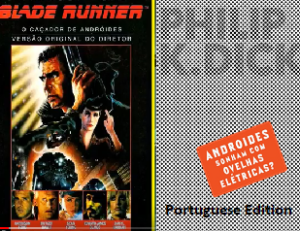 by Philip K Dick is reissued in 50-year commemorative edition (1968-2018) with unpublished writings: a letter from the author to the producers of Blade Runner in which prophesies the success of the production and the last interview granted by Dick, published in 1982 in the journal The Twilight Zone Magazine at the time of the launching of the film.
by Philip K Dick is reissued in 50-year commemorative edition (1968-2018) with unpublished writings: a letter from the author to the producers of Blade Runner in which prophesies the success of the production and the last interview granted by Dick, published in 1982 in the journal The Twilight Zone Magazine at the time of the launching of the film.
The exclusive preface signed by Argentine writer and journalist Rodrigo Frésan, a lover of science fiction and Dick’s work chronicling the troubled and impressive life of the author, and a brilliant scenarios they call “post-apocalyptic” by Douglas Kellner and Steven Best, professors respectively from the University of California and the University of Texas.
Add to this a postface written by the translator of the book, Ronaldo Bressane, who compares Androides with Blade Runner and comments on aspects of the work not explored in the cinema, such as environmental concern, besides the religious and metaphysical questions present in the text.
Religious and metaphysical issues are so current that they deserve an up-to-date view of what we think is our inner universe, our values and our relationship to the natural and yet transcendental world, in the non-immediate sense.
What is nature beyond nature and what is man beyond human is neither trans-nature nor trans-human only, but to look at it properly it will be necessary to have a transdisciplinary look, not to see from the side apocalyptic and pessimistic only.
Artificial Intelligence is undoubtedly an inspiration for the next few years, thinking of it is not thinking outside the spirit and human interiority, but it’s just questioning what it is, Blade Runner 2049 did this, but success was small, we preferred Robocop.
If inner life was reduced in modernity it is not due to current and upcoming advances, but due to the fact that sometimes we attribute to humans robots attitudes and not the opposite, because the current robots still have mechanical reasoning and a limited logic.
Agent environments and an example
The example that Norvig and Russel (2010) will give to describe what an environment in 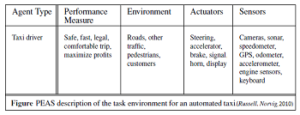 Artificial Intelligence is happy and unhappy at the same time, happy because it has become something real 8 years after the edition of the book, a taxi as a stand-alone vehicle, and unfortunate because there are already cases of accidents with autonomous vehicles.
Artificial Intelligence is happy and unhappy at the same time, happy because it has become something real 8 years after the edition of the book, a taxi as a stand-alone vehicle, and unfortunate because there are already cases of accidents with autonomous vehicles.
What is called environment is described as PEAS (Performance, Environment, Actuators and Sensors) (figure on the side), whose first stage is to design the task environment.
The agent will be different from a software (a softbot or webcrawler), but it is didactic.
The suggested environment was a stand-alone taxi, which at the time was “little beyond the capabilities of existing technology,” but on page 28 will describe a robot with this function, the fortuitous side of the example as the authors say is a ” completely open” and “there is no limit to the new combinations of circumstance that may arise”. (Norvig, Russel, 2010: 40)
What performance measures will be desired: arrive at the correct destination, minimize the correct destination time, fuel consumption and wear, traffic violations, disturbances and safety to passengers and other drivers, and if there are conflicts make decisions (this is one of the reasons for the accident to protect the passengers caused a hit by a passer-by).
The next step is to map an autonomous car environment, it must deal with a variety of roads, from rural lanes and urban lanes to 3, 4 and up to 5 lanes, with lanes, other vehicles, road works, police cars, puddles, and potholes, and should interact with potential and actual passengers.
Actuators for an automated taxi include those available to a human driver: control over the engine through the throttle and control over steering and braking. some optional choices of communication with other vehicles with arrows and even horn, and with passengers who will need voice synthesizers.
The basic taxi sensors will include one or more controllable video cameras so they can see the road; you can increase them with infrared or sonar sensors to detect distances to other cars and obstacles.
The problems of safety and conviviality with human drivers is evident, but thanks to this example of success made in 2010, today we have maps, GPS, road signs, and many others advances.
NORVIG, P.; RUSSEL, P. (2010) Artificial Intelligence: A Modern Approach 3nd ed., Upper Saddle River, New Jersey: Prentice Hall.
Possible and impossible changes
At other times, the proportions, the changes that occurred in previous stages, also caused a strong impression on the people, but the most influential disruptive technologies, glasses and telescopes, allowed the first printed books to be read, and thanks to the telescopes, the Copernican revolution took place.
impression on the people, but the most influential disruptive technologies, glasses and telescopes, allowed the first printed books to be read, and thanks to the telescopes, the Copernican revolution took place.
The change of paradigms that happens causes astonishment, but what needs to be done in fact, what is possible in a more distant reality and what can happen in the next years, I already indicated in some post, The “Physics of the impossible”, by Michio Kaku (2008).
The author quotes Einstein’s phrase at the beginning of this book: “If an idea does not seem absurd at first, then it will not have any future,” it takes a strong and shocking thought like this to understand that if we should bet on innovation, is the historical moment of this, you must understand that most disruptive things will initially be absurd.
Speaking of more distant things, at the beginning of the microcomputers, it was stated that they would not be useful to many people, the mouse was clumsy and “little anatomical” when it appeared, and there is still a lot of distrust in “artificial intelligence”, not only between laypeople on the subject, among scholars as well, others idealize an “electronic brain”, but neither Sophia (the first robot to have citizenship) and Alexa Amazon really has “intelligence.”
What has to be stopped, and this in Copernicus’s time was worth for the theocentric vision, today there is also an anti-technology sociopathy that borders on fundamentalism, if there are injustices and inequalities they must be combated on the plane in which they are in the social and political.
Roland Barthes said that every denial of language “is a death”, with the adoption of technology by millions of people this death becomes a conflict, first between generations, and then between different conceptions of development and education.
To the scholars I make the recommendation of Heidegger, affirmed on the radio and the television that only half a dozen people understood the process and of course with the financial power can control the publishings of these medias, but also one can answer in the religious field.
The reading of the evangelist Mark, Mc 16,17-18 “The signs that will accompany those who believe will be these: they will cast out demons in my name, they will speak new tongues; If they take snakes or drink any deadly poison, it will not hurt them; when they lay their hands on the sick, they shall be healed. ”
This needs to be updated for the new interpretations of this bible text.
KAKU, M. (2008) The Physics of the Impossible: a scientific exploration of the world of fasers, force fields, teleportation, and time travel. NY: Doubleday.
Art, autonomy and see
OWhat remains veiled in recent art and which is present in Hegel’s 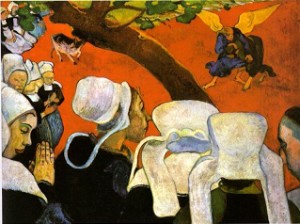 discourse, and even more so in the apparent rupture with the departure of the “plane” to the three-dimensional forms of the “polite” is still an idealist art of what Hegel called “autonomy” and that due to this idealism, Rancière called “autonomization.”
discourse, and even more so in the apparent rupture with the departure of the “plane” to the three-dimensional forms of the “polite” is still an idealist art of what Hegel called “autonomy” and that due to this idealism, Rancière called “autonomization.”
Rancière clarifies that it is autonomization: “one of these elements, the ‘breakdown of the threads of representation’ that bound them to the reproduction of a repetitive way of life. It is the substitution of these objects for the light of their appearance. From that point on, what happens is an epiphany of the visible, an autonomy of the pictorial presence. “(Rancière, 2003, p.87)
This autonomization is ultimately the famous “art for art” or in the opposite sense of “utilitarianism of art,” but both can not deny either the specific aspect of art and its connection with words or their usefulness “as useful as useful, “the writer Vitor Hugo would say, but it is about accepting the emancipation of the spectator through” interaction. ”
See Rancière writes in art: “Whether it be a Descent from the Cross or a White Square on a white background, it means to see two things at once” (Rancière, 2003, p.87), which is a relation between “the exposition of the forms and surface of inscription of words. “(ibidem), where the presences are” two regimes of the braid of words and forms. ”
To understand the problem of vision Rancière uses the painting of Gauguin Peasants in the field, there is a “first picture: peasants on a picture look at the fighters in the distance” (Rancière 2003: 95), the presence and the way they are dressed show that it is something else then a second picture arises: “they must be in a church” (idem), to make sense the place should be less grotesque and realistic and regionalist painting is not found, then there is a third picture: “The spectacle that it represents has no real place. It is purely ideal. Peasants do not see a realistic scene of preaching and fighting. They see – and we see – the Voice of the preacher, that is, the Word of the Word that passes through this voice. This voice speaks of Jacob’s legendary combat with the Angel, of terrestrial materiality with heavenly ideality. “(Ibid.)
In this way, Rancière affirms, the description is a substitution, the word for the image, and substitutes it “for another living word, the word of the scriptures” (Ranciere, 2003, 96)
It also makes a connection with the pictures of Kandinsky,he writes In the space of the visibility which his text constructs Gauguin’s painting is already a picture like those that Kandinsky will paint and justify: a surface in which lines and colors become more expressive signs obeying the unique coercion of ‘inner necessity'” (Rancière, 2003, p. 97), and we have explained earlier that it is not pure subjectivism because it makes a connection with both the inner thought and the thought about the description in the picture.
The important thing is the symbiosis between the image, the words and the vision resulting from a “unveiling” of the image that can be translated into words.
Androids and cyborgs: where?
The fiction Blade Runner has led us to think, just as in the Odyssey 2001 season too, yes we are going to space, machines grow in complexity, but we must ask the question of Terrence Deacon: Incomplete Nature: how mind emerges from matter ? (see our post).
The controversial Raymond Kurzweil in 2005: The Singularity Is Near: When Humans Transcend Biology is a book released by an update of The Age of Spiritual Machines and The Age of Intelligent Machines, but the bottom line is where did we come from? If we come only from chemical compounds that for millions of years have been forming complex organisms, until human complexity has arrived, a natural being, conscious and creating fantastic things, among them the machine, where will we arrive?
The question that precedes all those that are our “existence” is that which is our being, is transcendent in the sense of what was before man, we came only from the clay as the creationists want, we came from the mind of God as they want the religious, or it is still possible a synthesis between the two: a spirit has been “blown” in us.
In fact, what we think about the future has to do with what we think of our origin and why this question is important, then we can say that “being” precedes “existence” and we can say that the “existing being” precedes “ethics,” or in a more philosophical way “being” and “ethics” are conjugated ontologically, for both determine a being, and he is aware.
Then it will be possible to “blow” on androids and cyborgs no matter how sophisticated their decision-making mechanisms, a subject that refers to the axioms of Hilbert’s arithmetic, Kurt Gödel’s incompleteness and undecidability theorem, until we come to elaborate complex logics of these mechanisms in intelligent agents and “artificial intelligence”, but it would in fact be intelligence, in our view, for now androids and cyborgs only in fictions.
Androids have awesome superhuman parts and robotics (vision, strength, precision, etc.), While cyborgs have human parts and robot parts, but hybrids that have human and superhuman parts would depend on biogenetics and even more neuroscience advances that already exist.
We can create androids, as in the film Blade Runner 2049, but what capacity would they have for feelings and androds awareness ?
Blade Runner 2049 is better
A classic fiction film is undoubtedly Blade Runner, I do not consider the best nor the first, because we must remember Lost in Space (1965 to 1968) if we think of TV series and the Stanley Kubrick classic 2001: A Odyssey in the space of 1968, said by some: “the most incredible, beautiful and mentally stimulating science fiction film of all time.”
best nor the first, because we must remember Lost in Space (1965 to 1968) if we think of TV series and the Stanley Kubrick classic 2001: A Odyssey in the space of 1968, said by some: “the most incredible, beautiful and mentally stimulating science fiction film of all time.”
For those who knew the plot of the movie that is about to be released, there are some new and strange things.
But Blade Runner brought the replicants, hybrid beings whose true robotic identity is hidden, and only by the eye (more precisely by the iris could be identified) and in full war with humans, so they say, is the father of many modern science fiction in the robotic line.
In a cavernous setting in Budapest on an autumn morning in 2016, Harrison Ford – wearing a gray button-down shirt, dark jeans and a Ford-resistant grimace – is shooting a crucial rendezvous in Blade Runner 2049, now directed by Denis Villeneuve
For the first time in more than three decades, Ford is resuming its role as Rick Deckard, the fast-fingered, hard-drinking cop in 1982, of Ridley Scott’s first Blade Runner.
Why K (Ryan Gosling on the android hunter cop) does not just use the front door is not exactly clear, since the Blade Runner 2049 plot is protected with the kind of intensity usually reserved for Star Wars. (Even negotiating to get into the set demanded more and after a Voight-Kampff test).
Ana de Armas stated that her character is “strong and complex,” she “is Agent K’s mistress, her best friend, and the only person she can trust.”
After 30 years of Blade Runner there are some confirmed details: the public left Deckard injured and mistreated in 2019 Los Angeles, he disappeared, and the official LAPD of Gosling is on the hunt (possibly under the command of his boss, played by Robin Wright, although nobody involved with the movie say for sure).
Meanwhile there is a new generation of replicants – the series term for the androids that are built by a mysterious inventor named Wallace (Jared Leto), who is aided by a dedicated employee, Luv (Sylvia Hoeks).
That’s pretty much everything the 2049 team is saying, no matter how politely I ask. “I’m not even sure I’m allowed to say I’ve had a good time doing it,” laughs actor Gosling.
The launch is scheduled for October 5, 2017 (in Brazil).
Vision and Blindness
Vision of the world implies a set of sensations, including those that the cultural aspect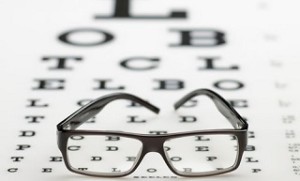 adds, that is, we think we see, but our vision is conditioned by tradition, and it is the dialogue with the tradition that allows us to take the veil from what we think we see, An unveiling.
adds, that is, we think we see, but our vision is conditioned by tradition, and it is the dialogue with the tradition that allows us to take the veil from what we think we see, An unveiling.
This was treated in philosophy since Socrates and Plato, the so-called cave myth, that is, what we see are shadows inside a cave we must go out into the light to see what really the world, until we reach the contemporary philosopher Heidegger, the Weltanschauung (German term meaning a worldview or cosmoview, where a cognitive orientation is fundamental so that an individual or an entire society can actually see.
In our daily life, this orientation encompasses both natural philosophy, with its fundamental, existential, normative values, its postulates or themes, its emotions and, in a special, ethical way.
What happens then to a person who is blind from birth? One of the miracles attributed to Jesus is that he healed a blind man from birth (Jo 1,6-9), which means that the cognitive system is not prepared to see, so it is indeed a very great miracle.
It is the miracle that the contemporary world needs, immersed in an illuminist and idealistic culture, where individualism and consumerism are byproducts because they are consequences, making people see once they are blind from birth, it means a “miracle”.
But what is the miracle possible to happen, is the fact that there is the “discomfort” of modernity, what bad interpreters call liquid, in fact it is a world in process of change, because what is there is uncomfortable and in a certain way inhuman.
It takes a new Weltanschauung, a new worldview, including ALL peoples.
Philosophy, Artificial Intelligence and God
We continue reading Peter Kreeft, now the interlocutor of Sócrates,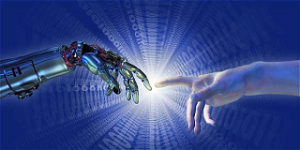 Peter Pragma is urgently to solve his problem of profession and seeks Socrates.
Peter Pragma is urgently to solve his problem of profession and seeks Socrates.
Peter started his philosophy classes and the teacher asked the question: what is the difference between human intelligence and computer intelligence, this is what the idea of going into computing referred to, we are on page 55, to which Socrates asked:
SOCRATES: You want to become a computer program, you mean? For the only thing that goes into computers. It’s the only language computers understand.
The teacher has thrown this question that Socrates considers it easy to answer, but Peter does not want any evasion, and Socrates goes straight to the point:
SOCRATES: Artificial intelligence can not do what your natural intelligence has just done.
PETER: What?
SOCRATES: She keeps doing it.
PETER: Oh … oh. Asking questions, that’s it.
SOCRATES: Congratulations. You find the treasure.
Peter and Socrates are talking and realize that the very origin of sophisticated programs, such as artificial intelligence, should be spoken of in “people” and not just in machines.
But what is the beginning of all this? First we need an unscheduled programmer, or a programmer who can question your schedule, there is an initial piece of dominoes.
PETER: This sounds like a new argument for the existence of God.
SOCRATES: The same principle works in one case as in the other. It is the principle of causality, which says that you can not give what you do not have, that effects can not exist without proper causes, that there can be no less in the total cause than in the effect. …
PETER: I do not know about God. Let’s talk about something we know: ourselves.
SOCRATES: Something you know, maybe. As for me, I find myself a mystery, just as I find God a mystery.
Peter will remember Socrates’ phrase: “Know thyself,” and say,
PETER: Why is it so difficult to know yourself, Socrates?
SOCRATES: Because the self is the knower himself. How can the subject become his own object? How can I become this? That’s why I also think God is a mystery. The human self is an image of the divine Self.
And continue …
Pokémon Go and augmented reality
I arrive at my university to work and see a lot of students walking 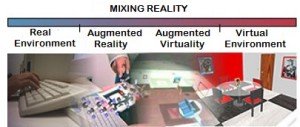 alone or in groups there here, I thought it is-new strike, some proof of selection for a course, but they were what are now being called pokeballs capturing Pokemons but the scene was new and curious.
alone or in groups there here, I thought it is-new strike, some proof of selection for a course, but they were what are now being called pokeballs capturing Pokemons but the scene was new and curious.
Since the past decade’s work and augmented reality environments, I thought a more productive use, virtual museums, studies of physics, chemistry or astrophysics; but the games were the first major use, it has become a fever and fever.
He told me a student who is not only out and go capturing Pokémon, incubating eggs, there are several tactics and mechanics that can become a better player than the others.
He summarized that way: not disperdice pokeballs, Pokemons with yellow circles around are very strong, look different Pokemons in different environments, capture Pokemons repeated that it is easier, and need not be connected with the camera the whole time.
But back to augmented reality, the Brazilian Congress in the area have been around since the end of the last millennium and the pioneer Dr. P. Milgram explains that actually are 4 levels: augmented reality, augmented virtuality and virtual environment, such as the Pokemons are the first level we think that there will be at least 3 more new developments.
What comes next may be even more surprising, then I think it is here to stay.
Augmented Reality and Pokemon Go I arrive at my university to work and see a lot of students walking alone or in groups there here, I thought it is-new strike, some proof of selection for a course, but they were what are now being called pokeballs capturing Pokemons but the scene was new and curious.
Since the past decade’s work and augmented reality environments, I thought a more productive use, virtual museums, studies of physics, chemistry or astrophysics; but the games were the first major use, it has become a fever and fever.
He told me a student who is not only out and go capturing Pokémon, incubating eggs, there are several tactics and mechanics that can become a better player than the others.
He summarized that way: not disperdice pokeballs, Pokemons with yellow circles around are very strong, look different Pokemons in different environments, capture Pokemons repeated that it is easier, and need not be connected with the camera the whole time.
But back to augmented reality, the Brazilian Congress in the area have been around since the end of the last millennium and the pioneer Dr. P. Milgram explains that actually are 4 levels: augmented reality, augmented virtuality and virtual environment, such as the Pokemons are the first level we think that there will be at least 3 more new developments.
What comes next may be even more surprising, then I think it is here to stay.

